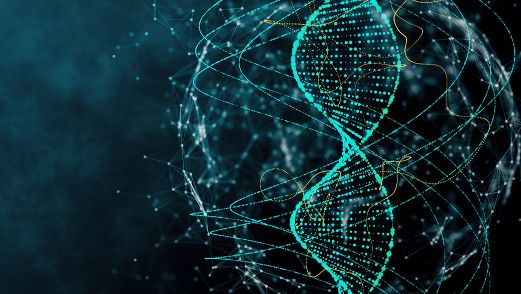



In this eLearning module, you will learn about Muscles, Vessels & Nerves of Front of Thigh. Muscles of the thigh can be subdivided into three compartments. The anterior compartment, medial compartment and posterior compartmen. The major muscles in the anterior compartment of the thigh is pectineus, sartorius and quadriceps femoris. the innervation of the anterior compartment of the thigh is from the femoral nerve. The femoral artery is the major artery in the thigh.
In this eLearning module, you will learn about Introduction to Lower Limb. The lower limb consist of the thigh, the leg and the foot. The structure of the lower limb is similar to that of the upper limb. In the hip joint the lower limb joins the pelvic girdle. The thigh consist of a single bone, the femur. The leg has two long bones, the tibia and fibula, and the sesamoid bone, the patella, that serves as the knee cap.
In this eLearning module, you will learn about Adductor Canal. The adductor canal is also known as the subsartorial or hunter"s canal. It passes through the conical musculoaponeurotic tunnel passing through the distal portion of the middle third of the thigh. The adductor canal is approximately 15cm long extending from the apex of the femoral triangle to the adductor hiatus of the adductor magnus.
In this module, You will learn about Femoral Triangle. The femoral triangle is a hollow region located in the supero-medial part of the anterior thigh. It is a wedge-shaped area formed by a depression between the muscles of the thigh. It is located on the medial aspect of the proximal thigh. It is an area through which multiple neurovascular structures pass through.
In this eLearning module, you will learn about Gluteal Region. The gluteal region refers to the general region of the buttocks that is situated on the posterior aspect of the pelvic girdle and it extends distally into the upper leg as the posterior thigh. The borders of this region are the anterior, superior and the inferior borders. This reagion also contains muscles, lymphatic vessels and neurovascular structures.
In this eLearning module, you will learn about Back of Thigh. The thigh includes many muscles and nerves and also contains bone, the femur. The hamstring muscles or simply the hamstrings are a group of three long muscles located in the posterior compartment of the thigh. The four muscles that make up the quadriceps are the strongest and leanest of all muscles in the body.
In this eLearning module, you will learn about Muscles, Vessels & Nerves of Adductor Compartment of Thigh. The medial or adductor compartment of the thigh is one of the three compartments in the thigh. The muscles in the medial compartment of the thigh are collectively known as the hip adductors including the muscles such as, gracilis, obturator externus, adductor brevis, adductor longus and adductor magnus. The nerve innervating the medial thigh are obturator nerve, which arises from the lumbar plexus. The arterial supply is through the obturator artery.
In this eLearning module, you will learn about Popliteal Fossa. The popliteal fossa is a diamond-shaped space behind the knee joint and it has four borders. The formation of it is between the muscles in the posterior compartments of the thigh and leg. Several muscles of the thigh and leg form the boundaries of the popliteal fossa. The borders of the popliteal fossa are the 4 main borders made from posterior muscles and tendons of the leg and thigh.
In this eLearning module, you will learn about Anterior & Lateral Compartment of Leg. The anterior compartment of the leg is among one of the four compartments in the leg between the knee and foot. The anterior compartment of the leg is a fascial compartment of the lower leg. The muscles found in the anterior compartment of the leg are the tibialis anterior, extensor hallucis longus, extensor digitorum longus and fibularis tertius. There are two muscles in the lateral compartment of the leg, The fibularis longus and brevis also known as peroneal longus and brevis.
In this eLearning module, you will learn about Back of Leg. The posterior compartment of the leg contains seven muscles which are organized into two layers, superficial and deep. The two layers are separated by a band of fascia. The back of the leg is the largest of the three compartments. The characteristic ‘calf’ shape of the posterior leg is formed by the superficial muscles. The tibial nerve provides innervations of the posterior leg compartment.
In this eLearning module, you will learn about Sole of the Foot. The sole of the foot contains 10 intrinsic muscles. They act collectively to stabilize the arches of the foot and individually to control movement of the digits. All the muscles are innervated either by the medial plantar nerve or the lateral plantar nerve. The muscles of the plantar aspect can be described in four layers.
Your Medical E-Learning Partner
Sign up to level up your learning capabilities.
SIGN UP Learn More